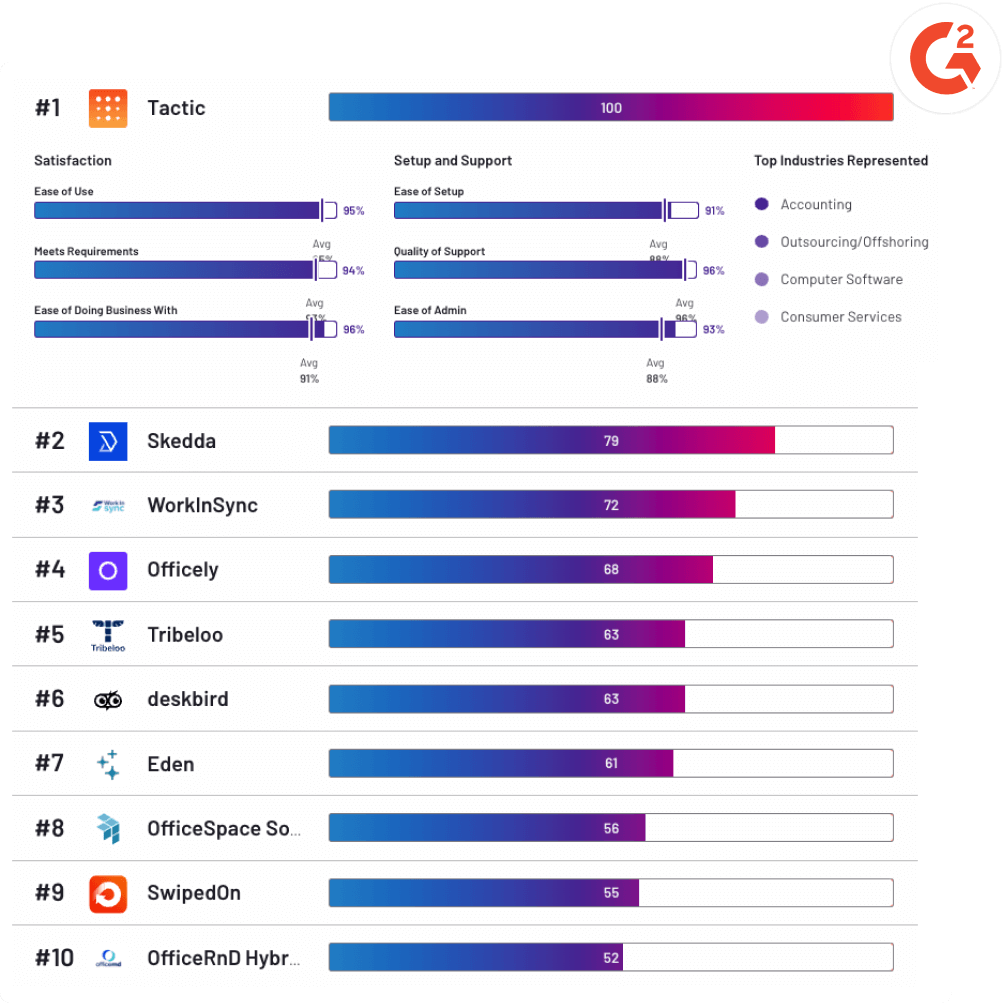Welcome to the modern hybrid office, where flexibility and productivity converge in a dynamic work environment. As the way we work continues to evolve, businesses are embracing the hybrid office model to accommodate the changing needs of their employees and optimize their operations. In this guide, we will explore the importance of efficient scheduling, reservations, and management in establishing a successful hybrid office.
In a hybrid office, employees have the flexibility to work both remotely and from a physical office space. This enables them to enjoy the benefits of working from home while maintaining face-to-face collaboration and access to company resources. However, managing a hybrid office comes with its own set of challenges, such as ensuring seamless coordination, effective communication, and efficient resource allocation.
To overcome these challenges, businesses need robust systems and strategies in place to schedule workspace usage, manage room reservations, and seamlessly integrate remote and in-office work experiences. This is where Tactic’s workplace experience platform comes in. With its comprehensive suite of tools and features, Tactic enables businesses to streamline their hybrid office operations, improve collaboration, and enhance employee engagement.
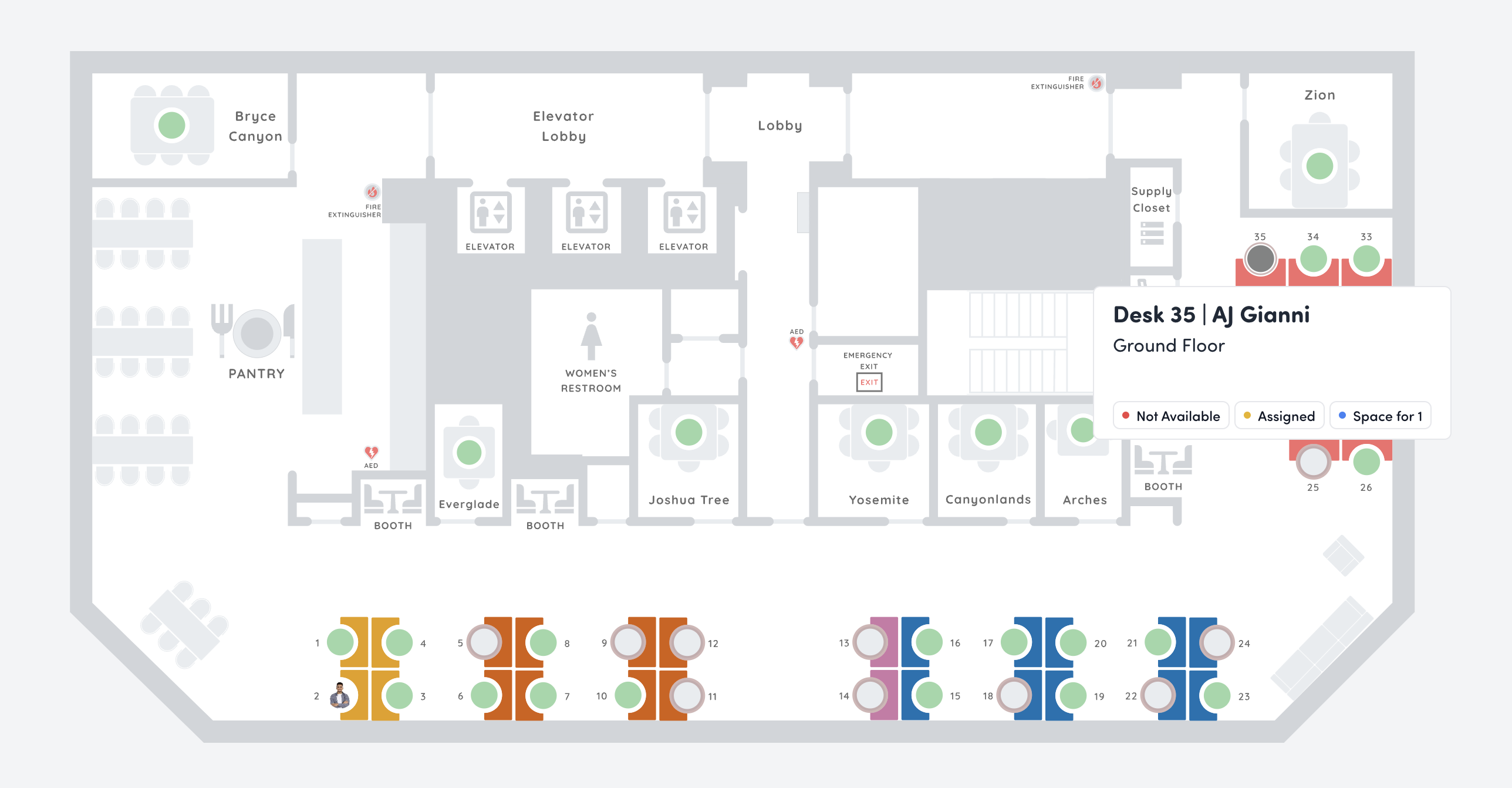
Key Takeaways:
- The hybrid office model offers flexibility and productivity for employees.
- Efficient scheduling, reservations, and management are crucial for a successful hybrid office.
- Tactic’s workplace experience platform provides a comprehensive solution for managing a hybrid office.
- The hybrid office promotes collaboration and communication among remote and in-office employees.
- Data-driven decision-making and continuous improvement are essential in a hybrid office.
Embracing the Benefits of a Hybrid Office
In today’s rapidly evolving work landscape, businesses are increasingly adopting the hybrid office model as a solution to meet the changing needs and preferences of their employees. By combining the flexibility of remote work with the advantages of in-person collaboration, the hybrid office offers numerous benefits that can drive productivity, enhance employee engagement, and improve retention.
One of the primary advantages of a hybrid office is the increased office attendance it enables. With the flexibility to work remotely part of the time, employees have the opportunity to schedule their in-office days strategically, maximizing their productivity and presence when face-to-face interaction is most valuable. This flexible arrangement allows businesses to maintain an active and vibrant office environment while providing employees with the option to work remotely when suitable.
Moreover, the hybrid office model has been shown to boost employee productivity. A study conducted by Stanford University found that remote workers experienced a 13% increase in performance compared to their in-office counterparts. By allowing individuals to work in environments that suit their personal workstyle, the hybrid office model empowers employees to optimize their productivity and focus, resulting in improved overall output.
Employee retention is another area in which the hybrid office excels. Offering a flexible work arrangement demonstrates an organization’s commitment to work-life balance and employee well-being, which can contribute to higher job satisfaction and loyalty. By giving employees the autonomy to balance their work and personal lives effectively, businesses can retain top talent and reduce turnover.
The hybrid office model allows businesses to maintain an active and vibrant office environment while providing employees with the flexibility to work remotely.
By embracing the benefits of a hybrid office, businesses can optimize their operations, enhance employee engagement, and promote a positive work culture. With the right tools and strategies in place, organizations can ensure a seamless and successful transition to this flexible work arrangement.
Key Benefits of a Hybrid Office:
- Increased office attendance through strategic scheduling
- Improved employee productivity by leveraging individual workstyles
- Enhanced employee retention through work-life balance

Comparison Between In-Office and Hybrid Office
| In-Office | Hybrid Office | |
|---|---|---|
| Office Presence | Required full-time | Flexible scheduling |
| Productivity | Influenced by office environment | Individualized workstyles |
| Employee Satisfaction | Dependent on fixed office hours | Work-life balance and flexibility |
Understanding the Role of Scheduling in a Hybrid Office
In a hybrid office model, efficient scheduling is a key factor in maintaining a harmonious work environment. Proper scheduling not only ensures that employees have access to the necessary resources but also facilitates collaboration and productivity. Tactic’s workplace experience platform offers a comprehensive solution for managing scheduling tasks effectively.
With Tactic’s workplace experience platform, companies can streamline desk bookings, room reservations, visitor management, and gain valuable insights into office utilization. By centralizing scheduling processes, the platform eliminates potential conflicts and ensures a smooth and efficient workflow.
Effective scheduling is the cornerstone of a successful hybrid office, enabling employees to plan their workdays effectively and optimize their time in the office.
One of the key features of Tactic’s workplace experience platform is its user-friendly interface, which allows employees to effortlessly book desks and reserve meeting rooms according to their needs. The platform’s intuitive design simplifies the scheduling process, reducing the time and effort required to secure workspace and resources.
Additionally, Tactic’s platform provides real-time data on office occupancy and utilization, enabling companies to make informed decisions regarding space allocation and utilization. By analyzing office data, businesses can identify patterns, optimize space usage, and make data-driven decisions to improve operational efficiency.
Benefits of Tactic’s Workplace Experience Platform:
- Streamlined desk booking and room reservation process
- Seamless visitor management
- Real-time office utilization insights
- Optimized space allocation
- Improved operational efficiency
Tactic’s workplace experience platform revolutionizes scheduling in the hybrid office, offering a user-friendly interface, comprehensive features, and valuable office insights. By adopting this platform, companies can enhance their scheduling processes, improve collaboration, and create a productive work environment.
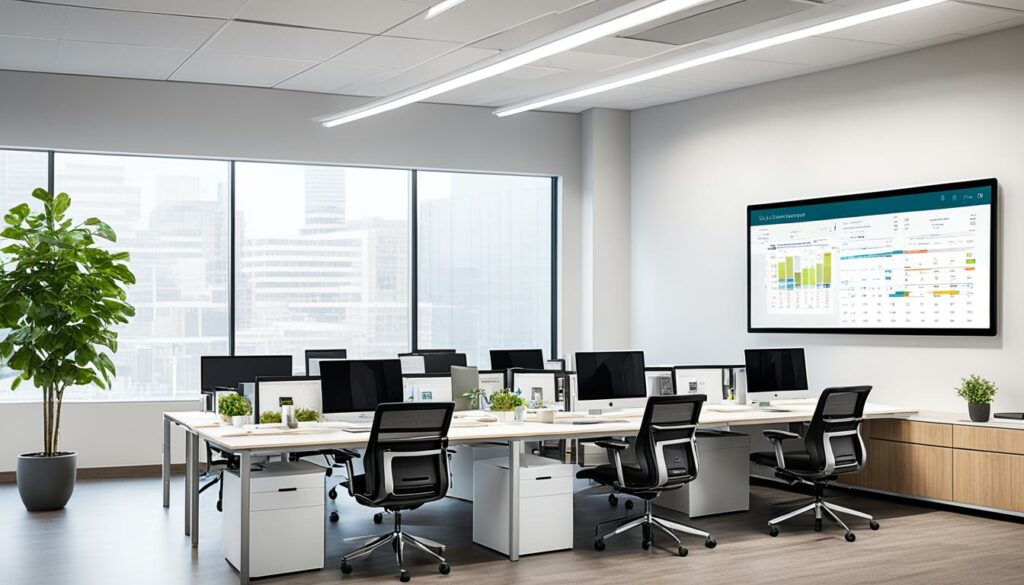
Streamlining Operations with Tactic’s Hot Desking Software
In today’s hybrid office environment, efficient operations are crucial for productivity and success. Tactic’s hot desking software is a game-changer when it comes to streamlining workflows and optimizing workplace efficiency.
With Tactic’s workplace experience platform, desk booking becomes a seamless process, empowering employees to easily reserve their desired workspaces. The intuitive interface allows for quick and hassle-free bookings, eliminating the need for manual scheduling and reducing administrative overhead.
But Tactic’s hot desking software is more than just a booking tool. It maximizes space utilization by intelligently allocating available desks based on real-time data. By analyzing usage patterns and employee preferences, the software ensures optimal usage of resources, ultimately reducing costs and minimizing waste.
Additionally, Tactic’s hot desking software offers a range of features that enhance the overall workplace experience. From integrated room management and visitor registration to insightful analytics, it provides a comprehensive solution for all aspects of office operations.
Tactic makes hybrid work easy
Tactic is the #1 rated hot desking software–an all-in-one solution for desk booking, room reservations, visitor management, and office insights. Whether you’re looking to streamline workplace operations, or improve employee engagement, we’ll show you how Tactic’s workplace experience platform is helping companies just like yours to deliver:
- 336% increase in office attendance
- 47% increase in employee productivity
- 25% increase in employee retention
You can easily deploy Tactic in an afternoon and start enjoying the fruits of hybrid productivity. Book a demo to learn more today!
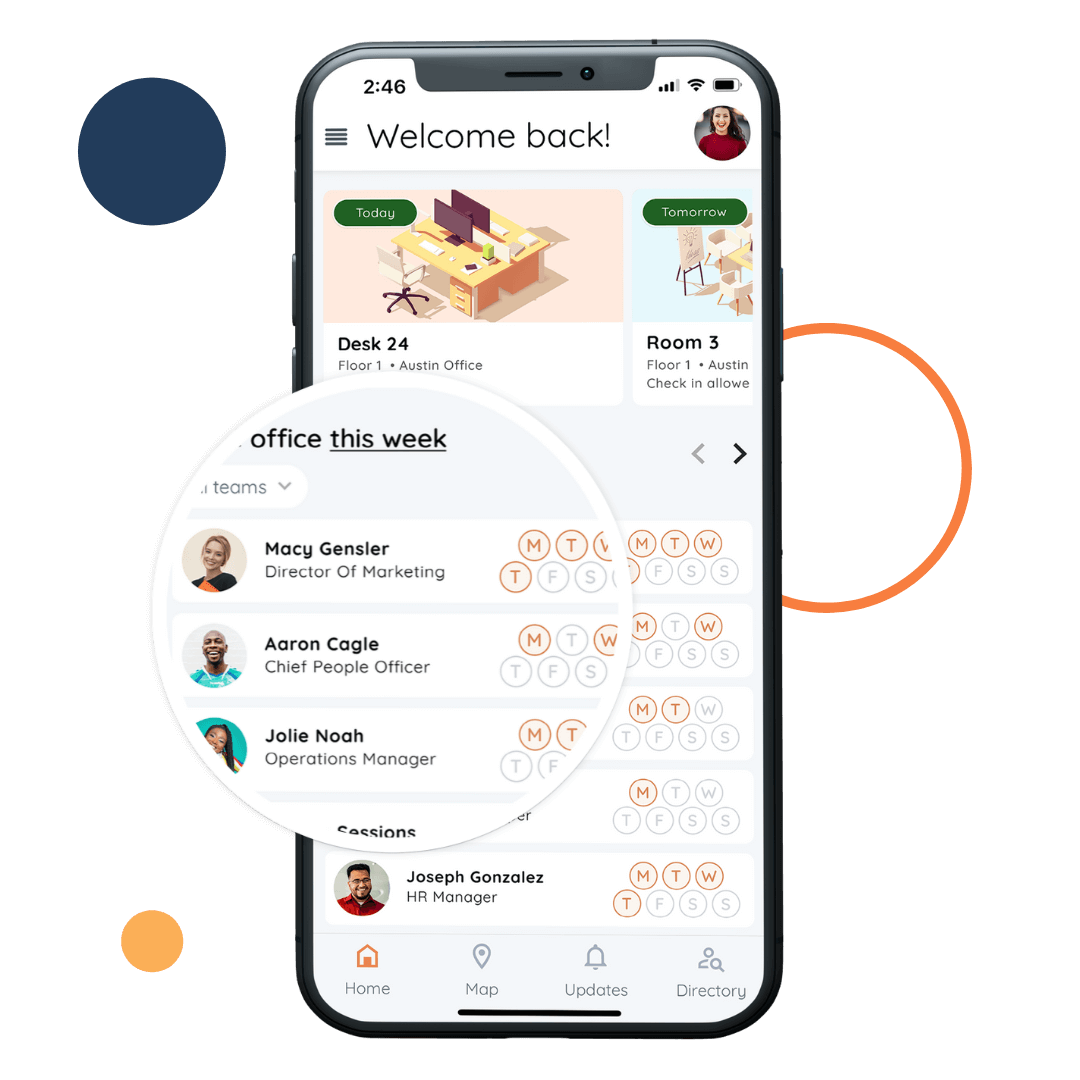
The Benefits of Tactic’s Hot Desking Software:
- Simplified desk booking process for employees
- Optimized space utilization and cost reduction
- Integrated room management and visitor registration
- Powerful analytics and insights for data-driven decisions
By leveraging Tactic’s hot desking software, businesses can create a more agile and efficient work environment. Employees benefit from a streamlined reservation process, while organizations gain valuable insights and cost savings. It’s a win-win situation for both productivity and the bottom line.
Experience the power of Tactic’s workplace experience platform and unlock the full potential of your hybrid office.
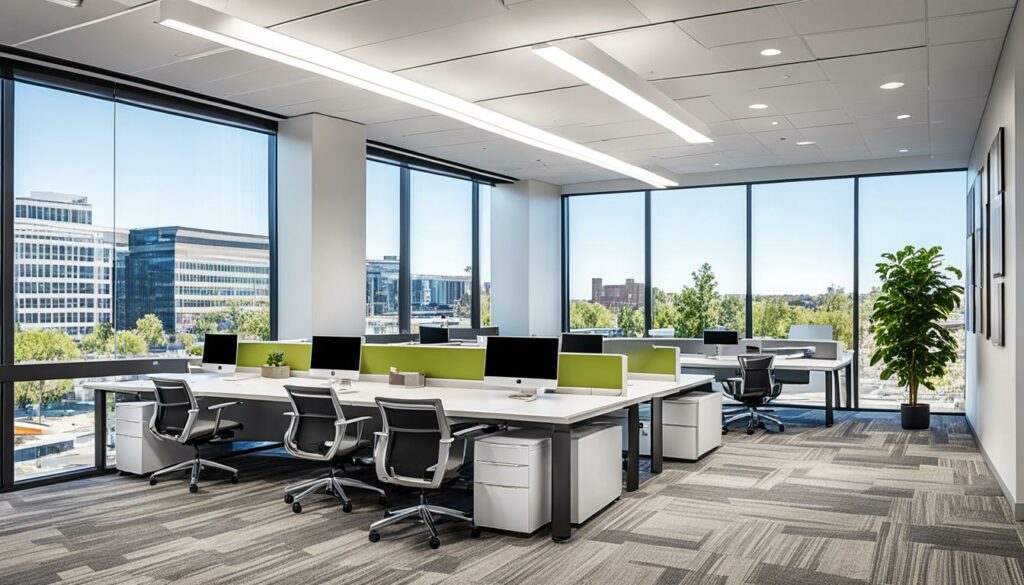
Enhancing Collaboration and Communication
In a hybrid office model, fostering collaboration and communication between remote and in-office employees is crucial for maintaining productivity and fostering a positive work environment. By implementing the right tools and strategies, businesses can ensure that teams seamlessly work together, regardless of their physical location.
One effective strategy is to provide employees with a reliable and user-friendly communication platform. Platforms like Slack or Microsoft Teams enable real-time messaging, file sharing, and video conferencing, allowing teams to connect effortlessly and exchange information efficiently.
Furthermore, promoting a culture of open communication and transparency is essential. Regular team check-ins, virtual meetings, and shared project management tools, such as Asana or Trello, can facilitate collaboration and keep everyone aligned and informed about project progress.
“Good communication is the bridge between confusion and clarity.”
Another powerful tool for collaboration in a hybrid office is a virtual whiteboard. Applications like Miro or Google Jamboard enable employees to brainstorm, create wireframes, and collaborate on visual projects in real-time, fostering creativity and ideation.
To encourage effective teamwork and collaboration, businesses should also establish clear protocols and guidelines for remote and in-office employees. This includes establishing shared expectations, defining communication channels, and setting project milestones that all team members can access and contribute to.
Ensuring Productivity in the Hybrid Office
In the ever-evolving work landscape, productivity is a crucial aspect for businesses operating in a hybrid office environment. To maximize efficiency and ensure seamless operations, it is essential to implement effective strategies that align with the unique challenges and opportunities presented by the hybrid office model.
Setting Clear Expectations
One of the key factors in maintaining productivity in a hybrid office is setting clear expectations for both remote and in-office employees. By clearly communicating goals, deadlines, and deliverables, employees can better prioritize their tasks and focus on achieving their objectives. This not only helps to avoid misunderstandings but also fosters accountability and encourages a results-driven work culture.
Establishing Remote Work Guidelines
Remote work guidelines are essential for ensuring that employees working outside the physical office space remain connected, engaged, and productive. By providing guidelines on communication channels, availability, and working hours, businesses can foster effective collaboration and mitigate potential challenges associated with remote work. These guidelines should be clear, comprehensive, and regularly communicated, allowing employees to work autonomously while staying aligned with the company’s overall objectives.
Leveraging Technology
Technology plays a crucial role in supporting efficient work processes in a hybrid office environment. Employing collaboration tools, project management platforms, and communication software can streamline workflows, enhance coordination among team members, and facilitate seamless information sharing. Leveraging technology not only improves productivity but also promotes a sense of connectivity and engagement among remote and in-office employees.
“Technology is a powerful enabler in the hybrid office, allowing teams to collaborate and communicate seamlessly regardless of physical location. Embracing the right tools empowers employees and ensures productivity remains high, regardless of whether they are working from the office or remotely.”
By implementing these strategies, businesses can effectively navigate the challenges of the hybrid office model while maintaining productivity and fostering a positive work environment for all employees.

Creating a Seamless Reservation System
In a hybrid office environment, efficient room bookings and resource allocation are crucial for ensuring a seamless workflow. With Tactic’s workplace experience platform, businesses can streamline their reservation management process and optimize office utilization.
By leveraging Tactic’s user-friendly interface, employees can easily book meeting rooms, desks, and other resources with just a few clicks. The platform’s intuitive design eliminates any confusion or time-consuming processes, allowing for quick and hassle-free reservations.
Moreover, Tactic’s workplace experience platform offers real-time availability information, enabling employees to make informed decisions when booking rooms or resources. This eliminates the frustration of double bookings or unavailable spaces, maximizing productivity and minimizing disruptions.
With Tactic’s platform, administrators have full control over room and resource allocation, ensuring that spaces are utilized efficiently and effectively. The platform provides comprehensive insights and analytics, allowing businesses to identify underutilized areas and make data-driven decisions for better office management.
With Tactic’s workplace experience platform, businesses can create a seamless reservation system that optimizes office resources and enhances productivity. Whether it’s booking meeting rooms or allocating desks, the platform simplifies the process, making it easy for employees to reserve spaces and administrators to manage allocations efficiently.
Benefits of Tactic’s Workplace Experience Platform:
- Efficient and user-friendly reservation process
- Real-time availability information for informed decision-making
- Streamlined room and resource allocation
- Comprehensive insights and analytics for data-driven decisions
With Tactic’s workplace experience platform, businesses can create a reservation system that enhances collaboration, minimizes disruptions, and maximizes office productivity.
Maximizing Employee Engagement and Retention
Employee engagement and retention are crucial for the success of any organization. In a hybrid office environment, where employees have the flexibility to work remotely or from the office, it becomes even more important to create a positive workplace experience that fosters engagement and encourages long-term commitment.
One key solution that can help maximize employee engagement and retention in a hybrid office setup is Tactic’s workplace experience platform. By leveraging this innovative platform, businesses can enhance their employees’ satisfaction and create a collaborative and inclusive work culture.
With Tactic’s workplace experience platform, employers can:
- Facilitate seamless communication: The platform provides various communication tools, such as instant messaging and video conferencing, that enable remote and in-office teams to stay connected and collaborate effectively regardless of their location.
- Promote team bonding and social interactions: Tactic’s platform offers virtual team-building activities, online forums, and networking opportunities, which foster a sense of belonging and camaraderie among employees, regardless of their physical presence in the office.
- Enable personalized development: The platform provides learning resources, training modules, and mentoring opportunities to support the professional growth and development of employees, regardless of their work location.
- Recognize and reward achievements: Tactic’s workplace experience platform includes features for real-time recognition and reward programs, allowing managers and peers to acknowledge and appreciate the contributions of remote and in-office employees equally.
Tactic’s workplace experience platform empowers businesses to create a collaborative and engaging work environment, where employees feel valued, connected, and motivated to perform at their best. By investing in employee engagement and retention, organizations can improve productivity, reduce turnover, and foster a positive company culture.
Image:
Leveraging Office Insights for Continuous Improvement
Data-driven decision-making is paramount in a hybrid office environment. It allows businesses to understand their operations, identify patterns, and drive continuous improvement. Tactic’s workplace experience platform offers valuable office insights and analytics, empowering organizations to make informed choices that positively impact their workspace and productivity.
By analyzing data collected from various sources within the hybrid office, Tactic’s platform provides a comprehensive overview of employee behavior, space utilization, and collaboration patterns. This enables businesses to make strategic decisions that optimize their office layout, enhance employee engagement, and foster a productive work atmosphere.
“Data is the new oil.” – Clive Humby
With Tactic’s workplace experience platform, companies gain access to a wealth of insights that drive meaningful changes. Through real-time analytics and reports, organizations can identify underutilized spaces, track room occupancy, and monitor employee preferences. Armed with this information, businesses can adjust their office layout and resource allocation, ensuring optimal utilization of available assets and creating an environment that prioritizes employee needs.
Increasing Employee Satisfaction and Well-being
Tactic’s workplace experience platform goes beyond numbers and spreadsheets. It takes into account employee feedback, sentiment analysis, and workplace surveys to provide a holistic view of the hybrid office environment. By understanding employee sentiment and preferences, organizations can implement strategies to improve overall workplace satisfaction, boost employee well-being, and foster a sense of belonging.
The platform’s comprehensive analytics allow businesses to identify areas of improvement and address employee concerns promptly. Whether it’s optimizing the temperature and lighting of the workspace or facilitating seamless collaboration through technology, Tactic’s platform empowers organizations to create an environment that supports employee happiness and productivity.
Driving Continuous Improvement and Innovation
Continuous improvement is a core tenet of any successful organization. With Tactic’s workplace experience platform, businesses have access to a wealth of data that enables them to identify trends, patterns, and areas for innovation.
The platform’s analytics highlight the effectiveness of different workplace strategies and initiatives, empowering organizations to refine their approach and implement innovative solutions. By leveraging office insights, businesses can iterate on their hybrid office model, adapt to evolving employee needs, and stay ahead of the curve in a rapidly changing work landscape.
“Data-driven organizations are 23 times more likely to acquire customers.” – McKinsey
By leveraging Tactic’s workplace experience platform, businesses can unlock the power of office insights to drive continuous improvement, enhance employee satisfaction, and foster a culture of innovation. The platform’s robust analytics provide actionable data, empowering organizations to make informed decisions that optimize their hybrid office and fuel long-term success.
Overcoming Challenges in Hybrid Office Management
While the hybrid office model offers numerous benefits, it also presents unique challenges that need to be addressed for successful implementation. From maintaining effective communication to ensuring equal opportunities for both remote and in-office employees, here are some practical tips and best practices to overcome these obstacles.
Maintaining Communication and Collaboration
In a hybrid office setup, it is crucial to establish clear channels of communication to foster collaboration among team members who may be working from different locations. Here are a few strategies to ensure seamless communication:
- Utilize collaborative tools and platforms such as Slack, Microsoft Teams, or Trello to facilitate real-time communication and project management.
- Schedule regular virtual meetings to keep everyone on the same page and encourage open dialogue.
- Establish guidelines for response times and availability to set clear expectations for communication.
Enabling Equal Opportunities
To ensure that remote and in-office employees have equal opportunities in a hybrid office, it is essential to implement inclusive practices. Here’s how you can promote fairness:
- Make sure that remote employees have the same access to resources and information as their in-office counterparts.
- Encourage virtual participation in meetings and brainstorming sessions to ensure remote employees have a voice in decision-making.
- Create opportunities for virtual team-building activities to foster a sense of belonging and inclusion.
“Effective communication and equal opportunities are key to successfully managing a hybrid office.”
By implementing these strategies, businesses can overcome the challenges associated with hybrid office management and create a cohesive and productive work environment.
Next, we will explore the seamless reservation system provided by Tactic’s workplace experience platform, which simplifies room bookings and resource allocation for hybrid offices.
Conclusion
Efficient scheduling, reservations, and management are crucial components of a modern hybrid office. Adopting the hybrid office model offers numerous benefits, including increased office attendance, employee productivity, and retention. To optimize operations and enhance engagement, businesses can leverage the power of Tactic’s workplace experience platform.
Tactic’s platform provides a comprehensive solution for desk booking, room reservations, visitor management, and office insights. Its hot desking software streamlines operations, simplifies desk booking, and optimizes space utilization. By embracing the hybrid office model and utilizing Tactic’s platform, businesses can create a seamless reservation system that ensures hassle-free room bookings and resource allocation.
Furthermore, the hybrid office model promotes collaboration and communication through tools and strategies that foster effective teamwork and seamless information sharing. To maintain productivity, it is crucial to set clear expectations, establish remote work guidelines, and leverage technology. Tactic’s workplace experience platform enables businesses to create a positive workplace experience, boost employee engagement and retention, and make informed decisions through data-driven insights and analytics.
In the evolving work landscape, embracing efficient scheduling, reservations, and management is key to success. By adopting the hybrid office model and leveraging Tactic’s workplace experience platform, businesses can navigate the challenges and reap the rewards of a flexible and productive work environment.
